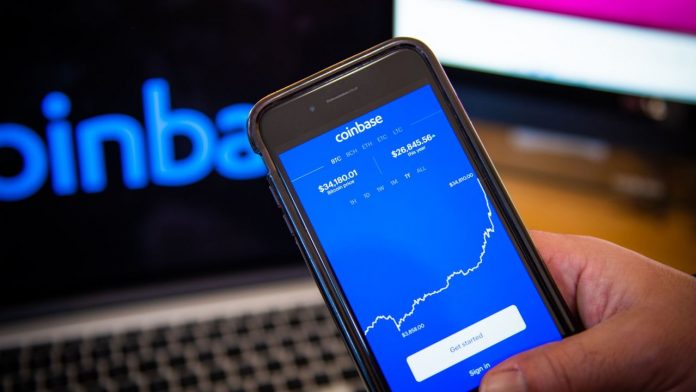Mega cryptocurrency exchange Coinbase is about to launch one of the most highly-anticipated public offerings of 2021 so far.
The crypto marketplace, which some estimate could fetch an astonishing $100 billion valuation (though based on Coinbase’s reference price, its valuation may be more in the $65 billion range), is set to begin trading on Wednesday, but via a less-common process: the direct listing.
With the confluence of a roaring stock market, a crypto market that’s hitting all-time highs, and Coinbase’s healthy balance sheet itself, “This is a great time to become public,” argues Reena Aggarwal, professor of finance and director of the Georgetown Center for Financial Markets and Policy. But since the company is sidestepping a traditional IPO, what can investors actually expect from Coinbase’s post-debut trading action?
How does a direct listing work?
You may remember direct listings from big debuts like Spotify, Slack, and Palantir in 2018, 2019, and 2020, respectively, and more recently from a handful of unicorns that have elected to go public via direct listing.
In a direct listing, the company isn’t issuing any new shares or raising any extra capital in its debut, and it forgoes an underwriter (along with the fees and roadshow tied to the IPO process). Instead of having a bank underwrite the listing and drum up buyers for the shares at an IPO price (which is set by the banks), the company is opening up their shares directly to the public instead.
Should investors expect a trading “pop”?
In recent months there’s been plenty of discussion about the so-called “IPO pop,” where a stock skyrockets from its IPO price (the price at which institutional investors bought shares before it began trading for the general public). Often when there’s a big pop, you’ll see lots of headlines about how much money was “left on the table”—or, what is frequently criticized as mis-pricing the stock.
In December, big names like Airbnb and DoorDash saw enormous IPO “pops” on their first day, with Airbnb, for example, soaring over 100% in its market debut.
But with direct listings, things work a bit differently. In a direct listing, the stock exchange and financial advisors will set a so-called “reference price,” a sort of jumping off point or benchmark usually based on where the company was trading in the private market. However, shares more often than not actually begin trading at a different price, so in that sense, there shouldn’t technically be a “pop.”
For Coinbase, that reference price is $250 per share, per the Nasdaq. Those like Barrett Cohn, the co-founder and CEO of private market investment bank Scenic Advisement, believe “there’s gonna be volatility” on its debut day, he tells Fortune, but “if there’s a dip, I think it’s going to be short lived. I think the volatility will mostly be upward.” (Cohn says he’ll be putting in his own order as soon as possible in order to buy shares, which his venture firm passed on funding many years ago, he admits.)
What is Coinbase’s stock ticker?
Coinbase will start trading on the Nasdaq on Wednesday under the ticker “COIN”.
A ‘lot of demand’
The supply and demand dynamics are what’s at play with a direct listing, as Citadel Securities’ head of execution services Joe Mecane said at Fortune’s Brainstorm Finance conference back in 2019 of the Slack listing: “You can end up in a situation where you have buyers showing up, but you’re not quite sure whether or not the supply is in the market.”
A direct listing also “increases the chances that the shares will flop on debut day if demand isn’t high enough,” Lule Demmissie, president at online trading and banking firm Ally Invest, wrote in a Tuesday note.
That demand part of the equation, however, likely won’t be an issue for Coinbase given how anticipated the listing is. Georgetown’s Aggarwal notes “I think there’s going to be a lot of demand” from both retail and institutional investors. Still, she cautions: “I would want to wait and see what happens in the next few months. There’s going to be competition.”
Ally’s Demmissie adds that “Expectations are high, and we have yet to see how Coinbase shares will perform. But no matter what happens on Wednesday, we think crypto could be having a moment,” she wrote. (The latter certainly appears to be true, as Bitcoin just hit an all-time high on Tuesday, topping $63,000.)
And according to Scenic’s Cohn, the success of Coinbase’s first day in the public markets will probably be judged more technically: “Does it hold its price? I think that is probably a pretty good gauge,” he says, referring to if the stock closes above its opening price.













